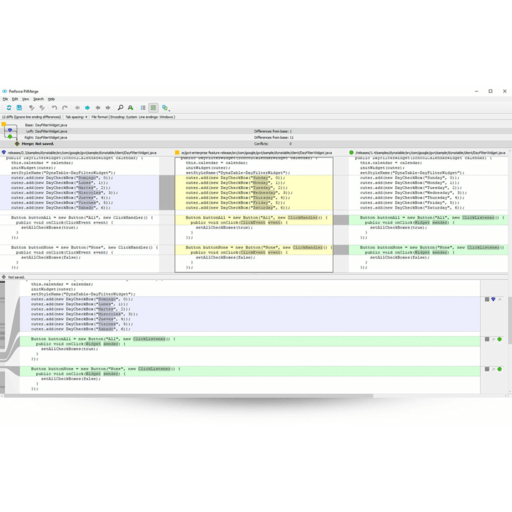

- #P4merge brew how to#
- #P4merge brew install#
- #P4merge brew windows 10#
- #P4merge brew code#
- #P4merge brew windows#
gitignore file setups organized according to your use-case.
#P4merge brew code#
If you are using a GPG key for code signing security, you may need to associate your GPG key with your GitHub email. If not, you'll receive a dialog response requesting your credentials, even if you're in a Linux console. If you already have credentials cached for a host, it will access them from the credential manager. Now any git operation you perform within your WSL distribution will use GCM. If you intend to work with Azure Repos or Azure DevOps, some additional configuration is required: git config -global credential. Git Credential Manager only works with HTTP(S) remotes.
#P4merge brew windows#
You can configure WSL so that GCM will use the WSL Git configuration, but this means that proxy settings will be unique to the specific WSL installation and not shared with others or the Windows host. This means things like proxy settings for GCM need to be set in Git for Windows as well as WSL Git as they are stored in different files ( %USERPROFILE%\.gitconfig vs \\wsl$\distro\home\$USER\.gitconfig). This is because GCM is running as a Windows application, and therefore will use the Git for Windows installation to query configuration. Using GCM as a credential helper for a WSL Git installation means that any configuration set in WSL Git is NOT respected by GCM (by default). If GIT installed is >= v2.36.1 git config -global credential.helper "/mnt/c/Program\ Files/Git/mingw64/bin/git-credential-manager-core.exe"Įlse if version is < v2.36.1 enter this command: git config -global credential.helper "/mnt/c/Program\ Files/Git/mingw64/libexec/git-core/git-credential-manager.exe" To set up GCM for use with a WSL distribution, open your distribution and enter this command:
#P4merge brew how to#
See the GCM repo for instructions on how to configure WSL without Git for Windows.
#P4merge brew install#
If you have a reason not to install Git for Windows, you can install GCM as a Linux application directly in your WSL distribution, but note that doing so means GCM is running as a Linux application and cannot utilize the authentication or credential storage features of the host Windows operating system. During the installation, you will be asked to select a credential helper, with GCM set as the default. Git Credential Manager is included with Git for Windows and the latest version is included in each new Git for Windows release. It is recommended to install the latest Git for Windows in order to share credentials & settings between WSL and the Windows host. This is the first version of Windows that includes the required wsl.exe tool that GCM uses to interoperate with Git in your WSL distributions.
#P4merge brew windows 10#
In order to use GCM with WSL you must be on Windows 10 Version 1903 or later. It will just access the token in the Windows Credential Manager. After the first time, you can use Git to talk to your hosting provider without needing to re-authenticate. It then stores the token securely in the Windows Credential Manager. GCM integrates into the authentication flow for services like GitHub and, once you're authenticated to your hosting provider, requests a new authentication token. It enables multi-factor authentication support for GitHub repos, Azure DevOps, Azure DevOps Server, and Bitbucket. NET that can be used with both WSL1 an WSL2. Git Credential Manager (GCM) is a secure Git credential helper built on. We recommend that you secure your account with two-factor authentication (2FA). If you need to edit your Git config, you can do so with a built-in text editor like nano: nano ~/.gitconfig. If you've never worked with Git before, GitHub Guides can help you get started. If you don't yet have a GitHub account, you can sign-up for one on GitHub. , Windows File Explorer will open and show me the directory path for that distribution. If I open those distributions, select the home directory with the command cd ~, and then enter the command explorer.exe. For example, on my laptop, I've installed two version of Ubuntu (20.04 and 18.04), as well as Debian. Not everything under / is the same drive.


The root of your file system / is the mount point of your root partition, or folder, in the case of WSL. Git can be installed on Windows AND on WSLĪn important consideration: when you enable WSL and install a Linux distribution, you are installing a new file system, separated from the Windows NTFS C:\ drive on your machine.

Git also makes collaboration easier, allowing changes by multiple people to all be merged into one source. With Git, you can track changes you make to files, so you have a record of what has been done, and have the ability to revert to earlier versions of the files if needed. Git is the most commonly used version control system.


 0 kommentar(er)
0 kommentar(er)
